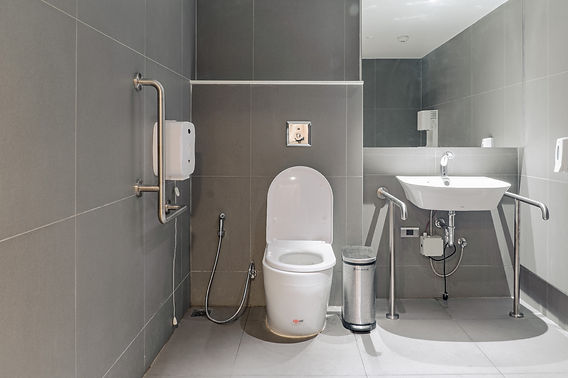For many homeowners, creating a comfortable and safe bathroom environment is a top priority. A popular choice among many is the installation of bathroom radiant heat systems. These systems provide a warm, inviting space, especially during the cold months. However, understanding bathroom radiant heat safety is crucial to ensure your bathroom remains both cozy and secure.

Understanding Radiant Heat Systems
Radiant heat systems work by warming the floors of your bathroom, ensuring that your feet remain toasty and comfortable. Unlike traditional heating methods, radiant heat provides even warmth throughout the space, reducing cold spots and drafts.
Types of Radiant Heat Systems
There are two primary types of radiant heat systems: electric and hydronic. Electric systems use electrical cables to produce heat, while hydronic systems circulate warm water through pipes beneath the floor. Both types have their unique advantages and considerations.
Benefits of Radiant Heat in Bathrooms
Besides providing warmth, radiant heat offers several benefits. It is energy efficient, reduces allergens by not circulating air, and operates silently. Furthermore, the even distribution of heat ensures a consistently warm bathroom environment.
Energy Efficiency
Radiant heat systems are known for their energy efficiency. By directly warming the floors, they reduce the need for additional heating, leading to potential savings on energy bills over time.
Reduced Allergens
Unlike forced-air systems, radiant heat does not circulate dust and allergens, making it an ideal choice for those with allergies or respiratory issues.
Bathroom Radiant Heat Safety Precautions
While radiant heat systems offer numerous benefits, safety precautions are essential. Ensuring that the installation is done correctly and using the right materials can prevent potential hazards.
Professional Installation
Hiring a professional to install your radiant heat system is crucial. A trained technician can ensure that the system is installed correctly and safely, reducing the risk of electrical or plumbing issues.
Using Quality Materials
Investing in high-quality materials for your radiant heat system is vital. Quality materials not only ensure longevity but also enhance the overall safety of the system.
Maintaining Your Radiant Heat System
Regular maintenance is key to ensuring the longevity and safety of your radiant heat system. Routine checks can help identify potential issues before they become significant problems.
Regular Inspections
Scheduling regular inspections with a professional can help identify any wear or damage to the system, ensuring it continues to operate efficiently and safely.
Troubleshooting Common Issues
Understanding common issues, such as uneven heating or unexpected power outages, can help homeowners troubleshoot minor problems, ensuring a consistently warm bathroom environment.
Integrating Bathroom Radiant Heat Safety with Other Safety Measures
For a comprehensive approach to bathroom safety, consider integrating radiant heat with other safety measures. This might include waterproof mats or safety sensors.
Enhancing Safety for All Ages
Whether you’re ensuring safety for young children or seniors, combining radiant heat with additional safety features can create a secure environment for everyone. For instance, flooring options designed for seniors can further enhance safety.

FAQs on Bathroom Radiant Heat Safety
Is radiant heat safe for all types of flooring?
Yes, radiant heat is compatible with most flooring types, including tiles, vinyl, and laminate. However, it’s essential to ensure that the flooring material is suitable for radiant heat systems.
Can radiant heat systems be used in other rooms?
Absolutely! Radiant heat systems are versatile and can be installed in various rooms, including kitchens and living areas, to provide whole-house warmth and comfort.
What should I do if my radiant heat system stops working?
If your radiant heat system experiences issues, it’s best to contact a professional for inspection and repairs. Attempting DIY repairs can lead to further complications.
For more information on enhancing bathroom safety, you can visit this comprehensive guide.
This article contains affiliate links. We may earn a commission at no extra cost to you.

